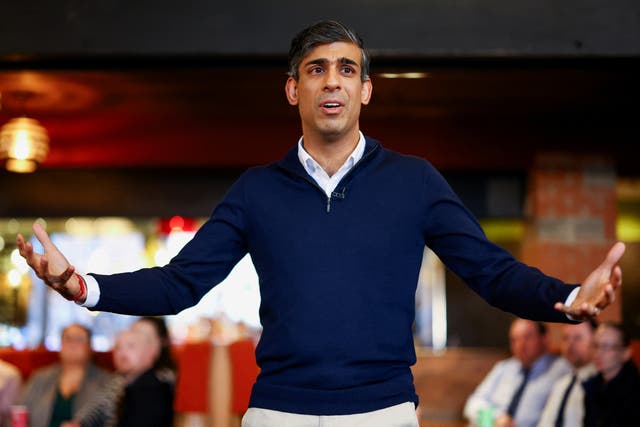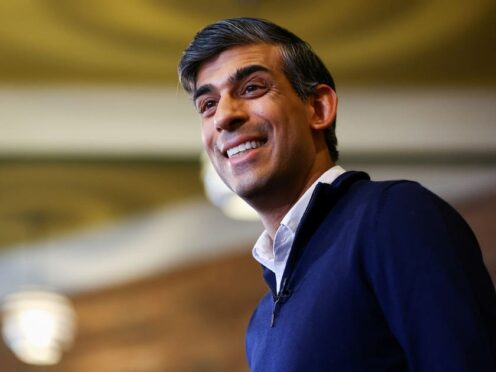Scrapping national insurance is set to be a key part of the Tory election offer to voters as Rishi Sunak suggested a squeeze on benefits could help pay for the plan.
The Prime Minister said “significant progress” could be made towards the goal of eliminating the tax during the next parliament if his party remains in power.
In a Sunday Times interview, Mr Sunak set out his intention to consult on new plans to reduce working-age benefits “to make sure that we can sustainably keep cutting taxes”.
Chancellor Jeremy Hunt used his Budget to set out a 2p cut in national insurance from April with a vague promise to eventually deliver a simpler tax system by eventually getting rid of it altogether.
Mr Sunak stressed his commitment to ending the “unnecessarily complex” system of having both income tax and national insurance contributions (NICs).
“All that money ultimately goes into the same pot to fund public services. So … our long-term ambition is to end that unfairness, to keep cutting NICs until it’s gone, because that is the best way to reward hard work, simplify the tax system, and build the kind of society that I think is right,” he said.
The aspiration to end the double taxation of work by scrapping national insurance was attacked as an unfunded promise by Labour, which pointed out it would cost the Exchequer around £46 billion.
The head of the respected independent Institute for Fiscal Studies think tank, Paul Johnson, said the pledge was “not worth the paper it’s written on unless accompanied by some sense of how it will be funded”.
But Mr Sunak said: “We’ve cut NICs by a third in two events over six months. So that demonstrates we are delivering and we can go further, though it’s important that we stick to the plan and then we can make significant progress towards that goal in the next parliament.”
A key to funding this pledge could be cutting the welfare bill, which is set to rise from £261.5 billion in 2022-23 to £360.1 billion in 2028-29 according to the Office for Budget Responsibility.

Mr Sunak said: “We now have almost 2.5 million working-age people who have been signed off as unfit to work or even look for work or think about working and I don’t think that’s right.
“We now sign off three times as many people to be out of work than we did a decade ago. That just doesn’t strike me as a system that’s working properly.”
The 2p cut in national insurance, which follows a similar measure in November, appears to have done little to revive Tory election hopes.
An Opinium poll put Labour 16 points ahead, with Sir Keir Starmer’s party on 41% and the Tories on 25%.
The survey of 2,054 UK adults from March 6 to 8 found 38% thought it was a bad Budget, while only 18% rated it as good and 44% were not sure.
The April timing of the national insurance cut has fuelled speculation about a May general election, but Mr Sunak, whose working assumption is for an election in the second half of 2024, said: “I stand exactly by what I said at the beginning of the year on timing.”
